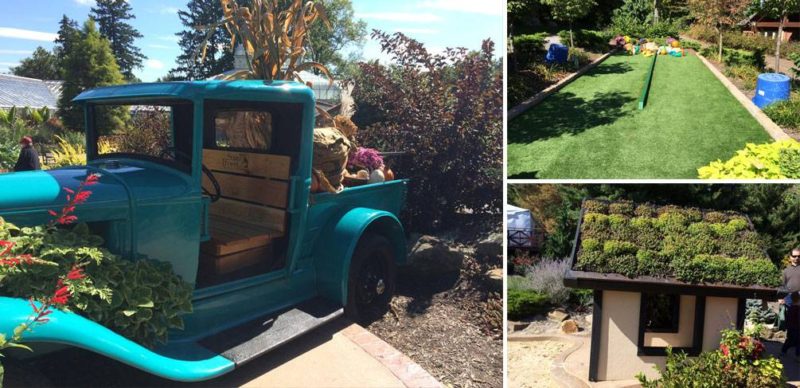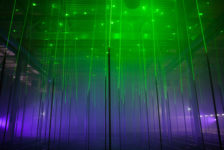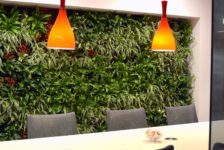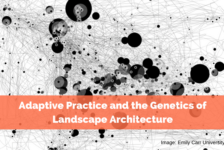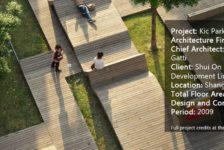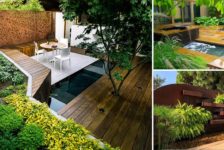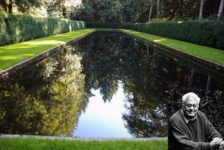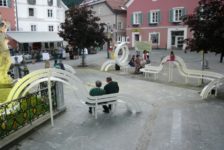Article by Erisa Nesimi We explore 10 projects that were made successful by their focus on being people-oriented designs. Design is a discipline that, regardless of its subject, is closely related to people, because they are at the end of the chain. Designs that listen to the end users are being implemented in projects all over the world and have been very successful. I strongly think that they are the key to better living conditions and healthier lives. Therefore, I want to share with you some great examples of landscape designs that focus on people’s needs, raising awareness on social sustainability. As Jan Gehl, an important figure in urban design, has stated: “Only architecture that considers human scale and interactions is successful architecture.”
People-Oriented Designs
Here are 10 of the best examples of designs that empower people: 1. Design to Enhance Activity — A’beckett Urban Square Since the Situationist movements of the 1960s, which proclaimed the importance of design as a tool against the apathy that people are often thrown into, designing to support the opportunities of moments in life has come into focus. A’beckett Urban Square in RMIT, Melbourne, Australia, is a wonderful example of how a space — no matter how small in scale — can accommodate dynamical social interactions and be a design of experiences. The key is in the small features of urban furniture, such as various sport facilities, which generate a stronger relationship between users and the space.

A’beckett Urban Square. Above: Before image, courtesy of Peter Elliott Pty Ltd Architecture + Urban Design. Below: After image (Not at the same angle as above image) Photo credit: John Gollings
Here, I am referring to an example that is so simple it’s fascinating. Kic Park in Shanghai, China, uses the material of wood to create a variety of shapes that create numerous pieces of urban furniture. In some cases, the material takes the form of a bench to sit on. In another, it is a bench you can lie down on. In yet another, it’s a shelter. All of these, emerging from the same material, make this design unique and inclusive. The material holds the feeling of warmth and comfort, adding to the great effects this design has. Flexibility in urban furniture makes this project a place where everyone finds his or her own place.
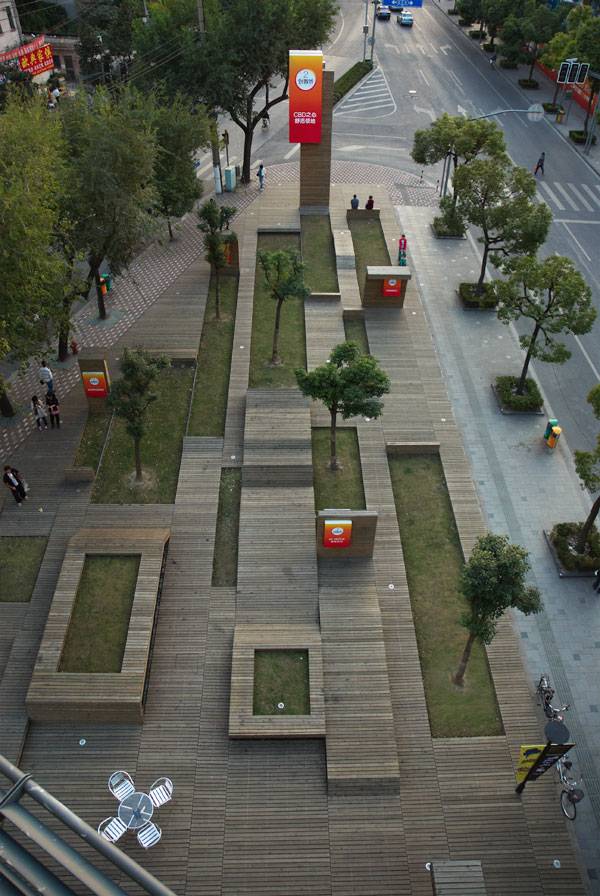
Kic Park. Photo credit: Shen Qiang
When stating the phrase “design for people”, we should bear in mind the fact that different people have different needs. This is the case for Van Campenvaart playground in Hague, the Netherlands. Here we see an example of how we can approach people with disabilities, but in a way that does not expose their disability. To the contrary, it creates a mixture of environments that are accessible for them, but do not note their particular conditions. This way, it creates a space for all, a space for every child to feel like he or she has the same possibilities.
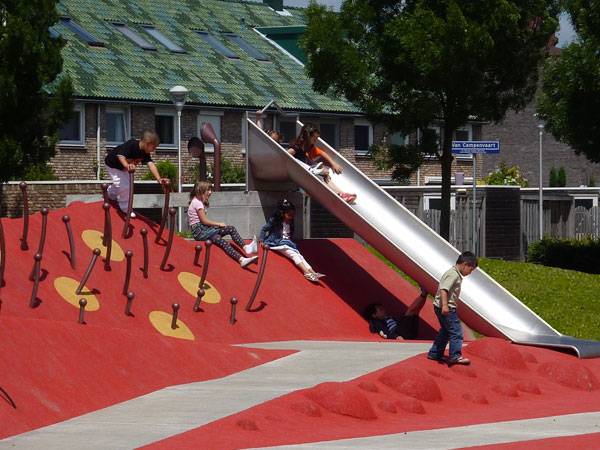
Van Campenvaart. Image courtesy of Carve
What is more user friendly than relying on users helping during the process? The initial idea for a new public space was approved by the city residents of Mesa City, Arizona. The design teams worked intensely with the community and deeply considered public opinions in order to address the inhabitants’ needs. Crucial to the success of the winning team’s proposal was the integration of public opinion into the design strategy by asking questions before they went to the drawing processes. This is a literal “from the community to the community” project.
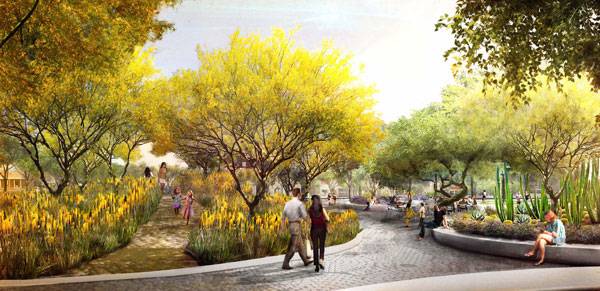
The upper terrace. Image courtesy of Colwell Shelor + West 8 + Weddle Gilmore
Public spaces are designed for people to conduct their activity, in groups or individually, but they should also promote vitality. Vanke Chongqing Xijiu Plaza, in Chongqing, China, makes use of the site context to do this. It not only offers people an opportunity to meet and get together, it also gives them the chance to sit and enjoy some marvelous scenery and stimulating landscapes, all in the middle of a buzzing city. Numerous trees, shrubs, and water features provide a thrilling experience.
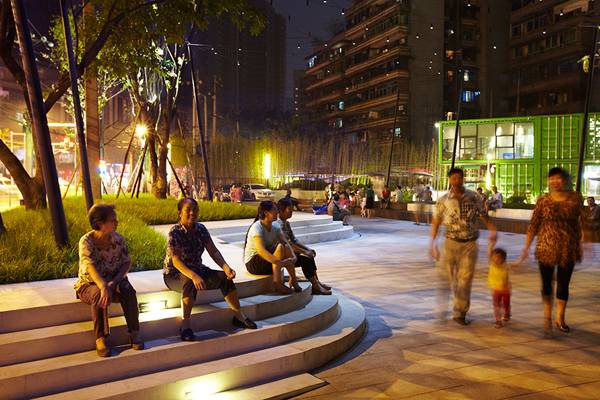
Vanke Chongqing Xijiu Plaza. Photo credit: ASPECT Studios
One of the main characteristics of human beings is the need to identify themselves with the spaces they use. Psychologists see these patterns in humans’ everyday life. But how can a public space achieve this? The Playgarden, at Stan Hywet Hall & Gardens in Akron, Ohio, is an example of achieving personal identification. It recalls the history of the city in one petite playground that is not only for children. It consists of elements that bring into focus parts of history and different individuals. There is a particular care for elements, such as footsteps on the ground, which enact our longing to identify with the place.

The Playgarden, by The Pattie Group of Novelty, in Stan Hywet Hall & Gardens, Ohio. Photo credit: Ann Norman
Various studies have been made on how architecture and design can help to prevent crime.
Jane Jacobs stated in her book “
The Death and Life of Great American Cities” that elements such as sidewalks and streets serve a vital role in ensuring the safety of their users. Plaza de la Luna in Madrid, Spain, makes this possible due to the choice of materials. Using the same paving for the sidewalk and the vehicular street creates a sense of ease for pedestrians and gives unity to the whole space. Materials that are difficult to vandalize were used, but the detail that proves their point is, of course, the lighting. The light fixtures generate a sense of safety during the nighttime, especially in the arcades zone, where the light is accentuated by white screens in the ceiling, creating a bright area.

A landscape acting as an example in our article about designing crime our of landscape architecture. Plaza de la Luna by Brut Deluxe and Ben Busche Architects.
What is truly amazing in the human character is the fact that not everything is programmed. Therefore, designs that are people oriented should show this characteristic in their concept. The Genk C-Mine design in Genk, Belgium, integrates this aspect into a design that offers a lot, but still leaves room for daily surprise. The unexpected can be visible from day to nighttime, when the lighting creates a vibrant space and beautiful scenery. It is also a place where events have been held, since people have found this place to be particularly fit for that purpose.

C-Mine-Genk. Photo credit: Pieter Kers.
Each design addresses a certain group or community, which means that particular care should to be put into their meeting their needs. This is the case in the Kyushu Sangyo University Campus Landscape Design in Fukuoka, Japan. Since the spaces are mainly used by students and professors, the designers have paid attention to their daily activities, resulting in spaces to sit and relax, as well as an amphitheater-like structure for their events. Various plant types have been used to reinforce the seasonal changes, which is very important to notice in a university environment. Small, informative tables create the chance to get to know more about each of the design aspects, adding to the educative character of a university. Based on studies of how students use spaces, there are no clear circulation routes.

Amphitheater at Kyushu Sangyo University. Image courtesy of DESIGN NETWORK +ASSOCIATES
This project shows how crucial it is to have a diversity of spaces in one place, especially when the context requires it. Consisting of three main places — ,the Red Square, the Black Market, and the Green Park — this design in Copenhagen, Denmark, satisfies the needs of all the people in the neighborhood, becoming a spot that offers many chances to meet people. In some areas, you are encouraged to be active, while in some others you are faced with more calming environments. This was achieved using very simple design elements, such as bright colors in contrast to black and white, a diversity of urban furniture, and vegetation, as well as elements to represent each nation of the community.
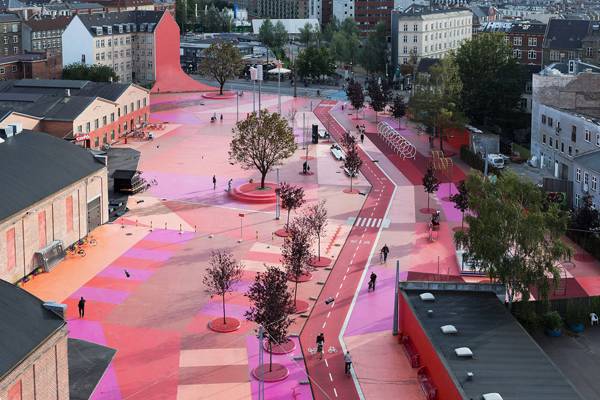
Pedestrian friendly street. “Creative Commons BIG – Bjarke Ingels Group – SUK – Superkilen Park, Copenhagen, Denmark”. Source Forgemind ArchiMedia, licensed under CC 2.0
We as designers often forget about the social impact our projects have. Focusing too much on the aesthetical aspects results in projects that only look good on paper. Pretty designs sometimes lack the ability to address their users, and we often see people “misusing” these spaces. User experience should teach us lessons that we can base our further projects on. Landscape architects should create designs that affirm the presence of people.
When designing parks or other public spaces, remember the expression “
Do unto others as you would have them do unto you.”
CLICK TO COMMENT
Recommended Reading:
Article by Erisa Nesimi
Published in Blog








